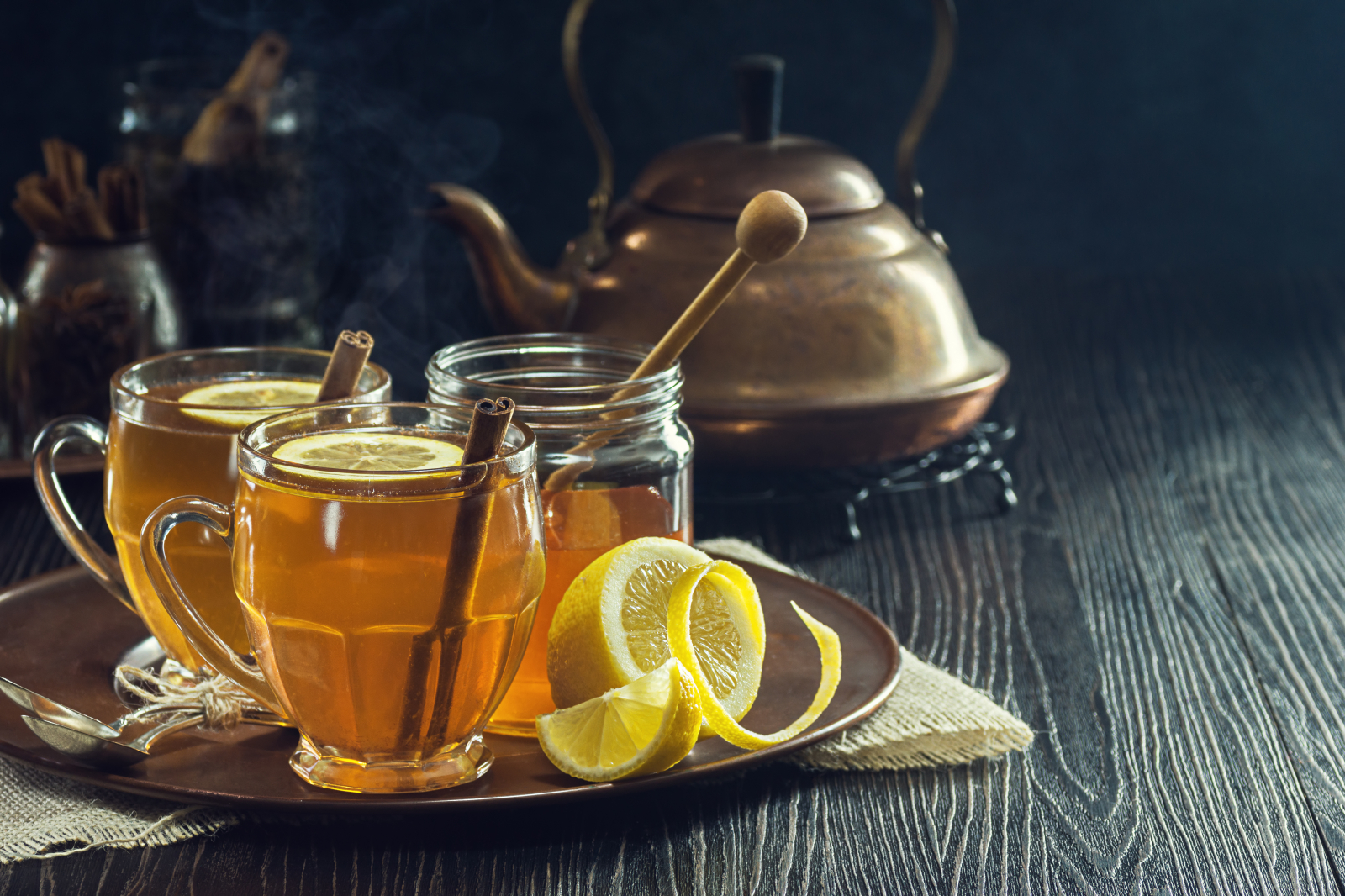The Surprising Science Behind Hot Toddies
There's a reason they're so popular...

© Getty Images
Why Does It Work?
Made with steaming hot tea, honey, lemon, and a healthy dose of alcohol (usually whisky), hot toddies have long been a go-to cold remedy. Sure, you may drift off to sleep afterwards, but is there any real clout to claims that the boozy drink has healing properties?
Its history is a little murky, with some claiming India as its origin—likely because of the spices and Hindi word "taddy," referring to a drink made of fermented sap—while others point to an Irish doctor named Robert Bentley Todd. Wherever it came from, the drink has worked its way into modern lore.
"Yes, yes, but does it work?"
The short answer? Yes.
Here's why:

© Getty Images
The most potent element in a hot toddy is the alcohol—no surprise there—but not for the reasons you think.
Alcohol has anti-bacterial properties, so it clears the bacteria from your sinuses. In small doses, it can also increase blood circulation, which deflates your blood vessels and allows the mucus to flow more easily to help you breathe better. Together with the steaming hot water and anti-bacterial honey, you'll be back to yourself in no time.
Be careful, though, because there is such a thing as "too much of a good thing." One too many hot toddies could have you waking up with a wicked hangover on top of your cold, causing dehydration. And, it might take you even longer than usual to get over both. Heavy consumption of alcohol can cause a host of problems, including cardiovascular ones, but a hot toddy or two shouldn't be an issue for most people.
So, drink up and get a good night's rest. You'll feel better in the morning.
Still hungry? Check out 10 Drinks to Help You Sleep Like a Baby.
More steaming articles
 14 amazing ways to make chocolate chip...
14 amazing ways to make chocolate chip...
 Martha Stewart and Snoop Dogg Recreated...
Martha Stewart and Snoop Dogg Recreated...
 Parents can't stop sharing this...
Parents can't stop sharing this...
Chef Tips and Tricks
Named for the famous ballerina Anna Pavlova, this delicate lemon pavlova is simply divine.
INGREDIENTS
- Eggs
- Confectioner's sugar
- Fresh lemon juice
- Sugar
- Flour
- Butter
- Lemon zest
METHOD
- Separate egg yolks and whites
- In a bowl, whisk egg whites
- Add confectioner's sugar
- Distribute on baking pan and flatten center lightly with a spoon
- Bake for 30 minutes at 250 degrees
- While that's baking, squeeze fresh lemon juice into a bowl
- Add egg yolks, sugar, and flour then whisk together
- Add butter and whisk again
- Take the merigues out of the oven once they're ready
- Spoon the filling into the center of the meringues
- Grate lemon rind and sprinkle the zest over the top of the pavlovas
- Serve!


Comment on this article